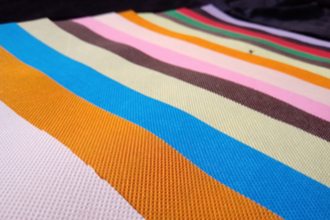Use of Nonwoven Fabrics Market as an Effective Means to Lessen Environment Footprint Has Increased across the World

19 Jan
2022
Non-woven fabrics can be defined as textile fabrics comprising randomly placed or parallel-laid, or sometimes, cross-laid grids glued with adhesives under required pressure & heat, either perfunctorily or chemically. They are made of divergent fibers or plastic layers. Mainly, in the textile sector, the term' non-woven fabric' is quite frequently used, standing for fabrics that are neither interlaced nor spun. The physical attributes of non-woven textile, however, are reliant on the choice of fiber, the technology plied for fiber arrangement, and bonding method.
Recently, a super comfy and eco-friendly shoe insole has been fabricated by Philippine Textile Research Institute taking recourse to natural textile fiber-based nonwoven as well as crocheted and woven fabrics. Samples and patterns have already been concocted utilizing pineapple leaf fiber with a mishmash of more than two coatings- the upper padding, the lignocellulosic-based nonwoven fabric, and the elective backing support. The middle nonwoven film in the middle acts as the softening & muffling component of the shoe insole, offering the much needed guard and comfort to the wearer's feet.
According to Allied Market Research, the global nonwoven fabrics market is projected to cite a significant CAGR from 2021 to 2030. In the last few years, there’s been huge development in the textile industry across the world, which has highly beneficial for the market growth in more than one way. Especially, the outbreak of COVID-19 has given way to a steep increase in demand for nonwoven hygiene products, mainly in the healthcare hubs. As for example, use of nonwoven fabrics to fabricate healthcare requisites such as disposable caps, face masks, and isolation robes has also become pretty rampant during the pandemic, thereby boosting the market positively.
At the same time, extensive adoption of these fabrics for the fabrication of lightweight automobile modules is supplementing market growth. Moreover, several innovations in terms of product development such as introduction of smart nonwoven textiles and blast-resistant drapes have amplified the demand for the fabric yet more. The fact that these textiles tend to fill out under tension makes them absorb shockwaves and lay hold of flying debris in the best possible manner. This is how they have found their wide applications in an array of verticals including automotive, building & construction, and many more. Last but not the least; top-end technological advancements in production technologies and rise in R&D ventures in the manufacturing of eco-friendly fabrics are expected to pave the way for lucrative opportunities for the key players in the industry.

Koyel Ghosh
Author’s Bio- Koyel Ghosh is a blogger with a strong passion and enjoys writing in miscellaneous domains, as she believes it lets her explore a wide variety of niches. She has an innate interest in creativity and enjoys experimenting with different writing styles. A writer who never stops imagining, she has been serving the corporate industry for the last five years.
Avenue: Entire Library membership of Allied Market Research Reports at your disposal
- Avenue is an innovative subscription-based online report database.
- Avail an online access to the entire library of syndicated reports on more than 2,000 niche industries and company profiles on more than 12,000 firms across 11 domains.
- A cost-effective model tailored for entrepreneurs, investors, and students & researchers at universities.
- Request customizations, suggest new reports, and avail analyst support as per your requirements.
- Get an access to the library of reports at any time from any device and anywhere.
Related Post
-
How are Submarine Cables Transforming Global Connectivity with Enhanced User Experience?
-
Endoscopy Procedures: Transformations in Techniques and Applications
-
AI-Powered Video Analytics: How the Product Actually Works for enterprises
-
Painting Robots: Transforming Precision Coating and Creative Applications
-
Innovations in Pharmacovigilance Systems Advancing Patient Safety
-
Understanding Edge Security: Keeping Data Safe Near the Source
-
Exploring the Use and Advancements of 3D Laser Scanners in Professional Applications
-
Reinforcing Industrial Controls with Smarter Tools and Training








